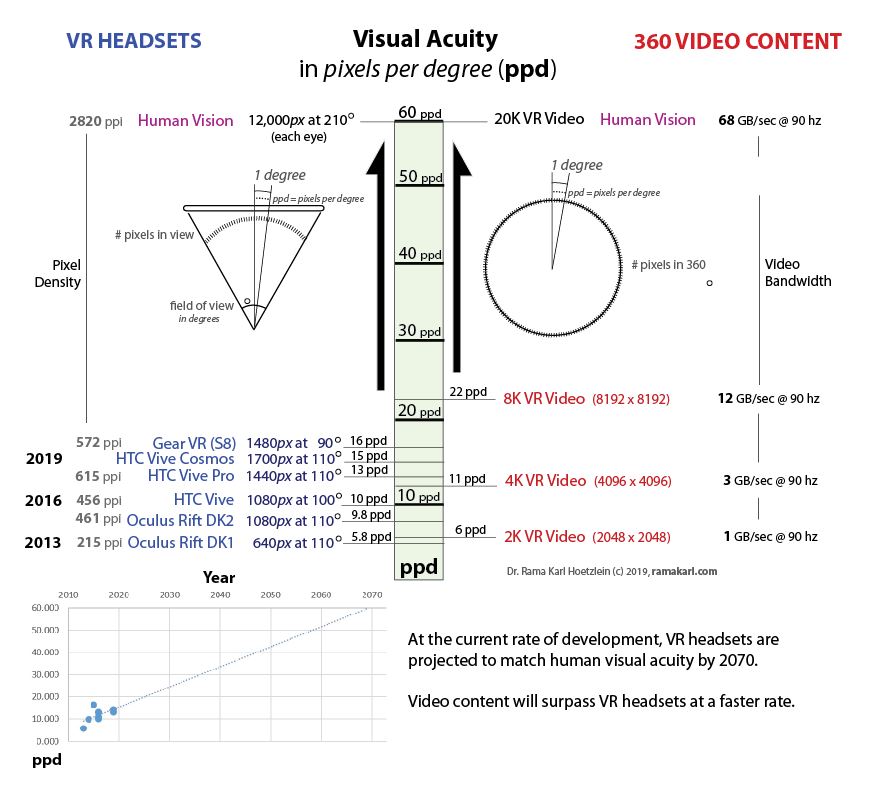
Race to Virtual Reality:
The Future of VR Headset Visual Acuity
The release of the Oculus Rift DK1 in 2013 brought Virtual Reality to the mainstream, again. With low latency and 110 degree field-of-view, for the first time this offered a reasonably priced VR headset that doesn’t make people nauseous (for most). Since then companies such as HTC, Samsung and Oculus have entered and propelled the VR Headset market forward. None-the-less building a good VR Headset is a difficult challenge as consumers expect high resolution, wide field-of-view, low latency, and decent contrast.
To understand trends in VR Headsets we look at visual acuity as measured in pixels per degree (ppd). While other measures are also important, such as field-of-view, this metric indicates the visual density of the device – a strong factor in the perception of quality and reduction of the pixel grid effect. Although this market is still in very early development, analysis of VR Headsets from 2013 to 2019 shows a roughly linear growth in ppd (left side of image). The Oculus Rift DK1 from 2013 has an acuity of 5.8 ppd, whereas the more recent Gear VR from 2019 has an acuity of 16 ppd.
Meanwhile, looking at recorded 360-degree Video Content (right side of image), we see a trend from 2K to 4K in the past 5 years, with the future looking at 8K content. There is currently very little 8K video content but that is expected to change. More importantly the technology for 8K video recording and playback is now possible. With a 360 degree field-of-view 8K video content contains an acuity of 22 ppd, surpassing the most modern headsets. In other words, even with the best VR headset you won’t be able to make out all the details found in an 360-degree 8K video.
Human vision has an acuity of 60 ppd – up to 12,000 pixels across a 210 degree field-of-view. A linear trend shows that VR Headsets will slowly inch their way toward this goal, depending primarily on the OLED and related markets to push higher screen pixel densities. At the current rate, we can estimate that VR Headsets may match human visual acuity by the year 2070. Thus you might not want to wait for the “perfect” headset as it could be a while. In the meantime factors such as field-of-view, low latency, contrast, tracking and interaction will provide a great deal of variety in the market before we get there. By 2100, a century from now, people could be enjoying VR experiences as richly detailed as waking life – hopefully with sunglasses instead of heavy headsets.
